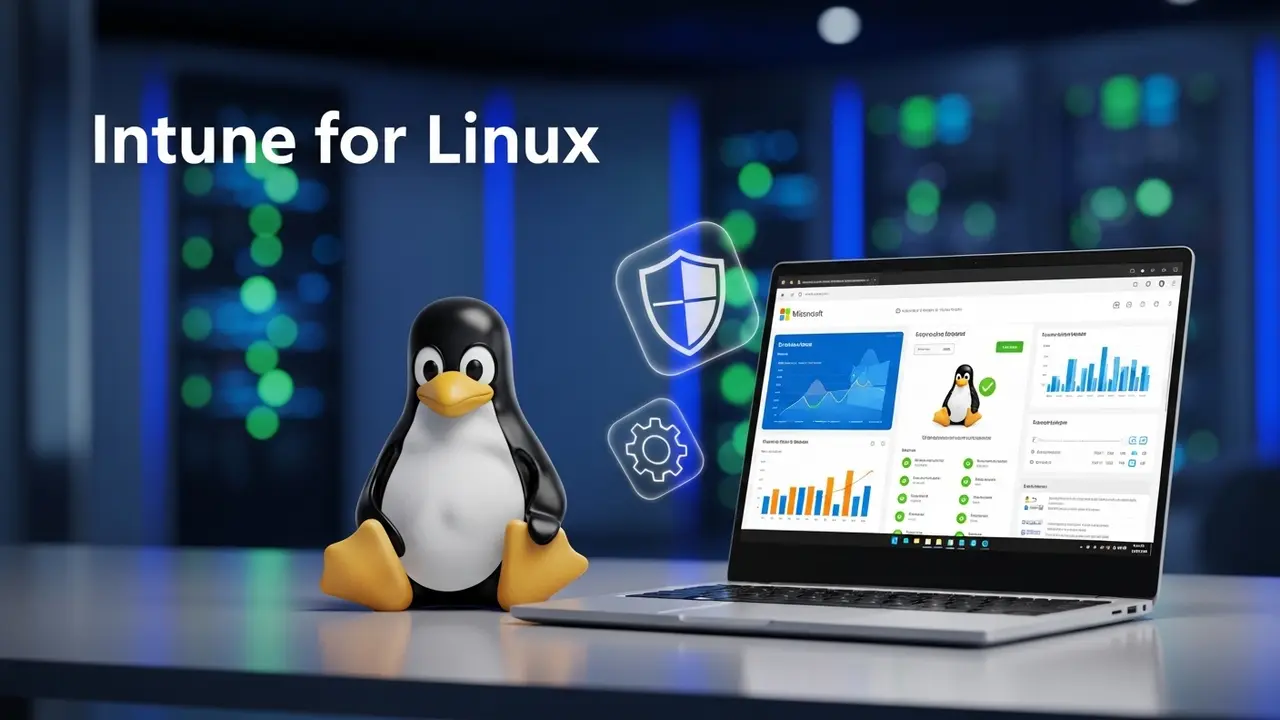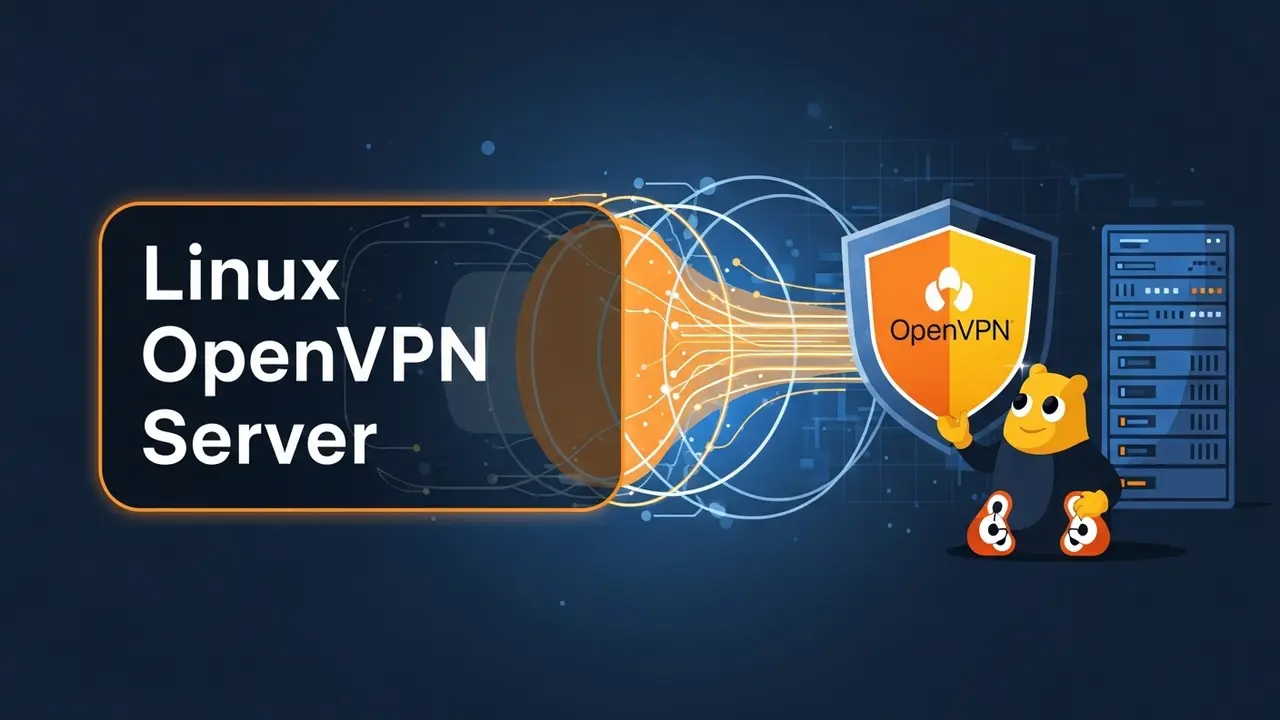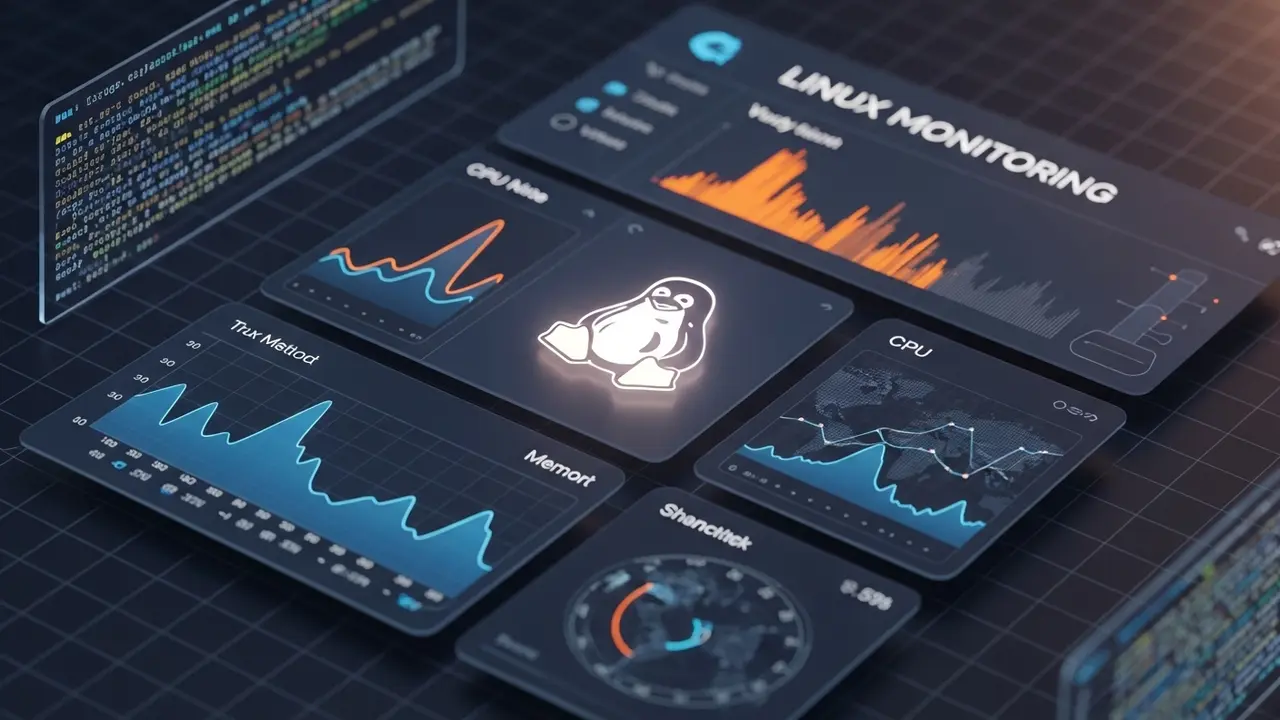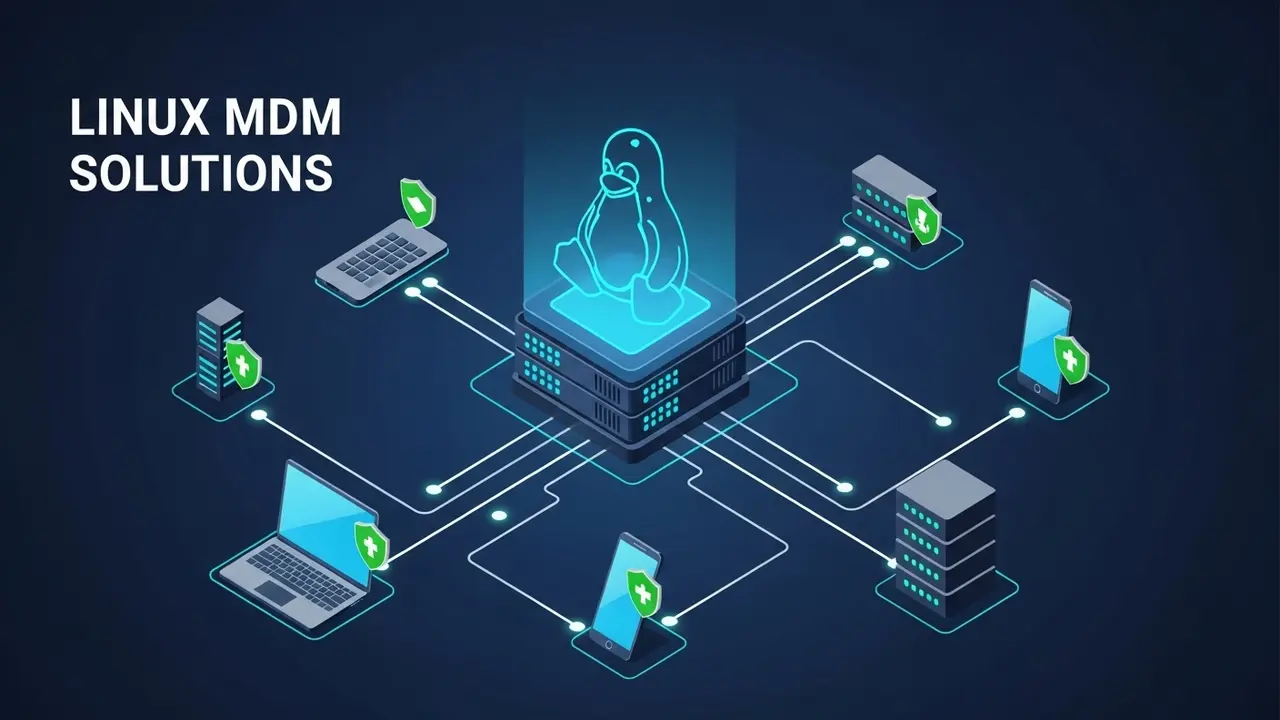- 1 Your Linux Devices: Are They a Mess? And a Big Security Risk?
- 2 The Pain of Linux Devices Running Wild
- 3 Intune Linux: Your Game Plan for Taking Control
- 4 Your Top Questions About Intune Linux Management, Answered!
- 4.1 How does Intune actually manage Linux devices?
- 4.2 Which Linux versions does Intune work with?
- 4.3 Can I run my own custom scripts on Linux using Intune?
- 4.4 What’s the big deal? Why use Intune for Linux security?
- 4.5 How does Intune work with Azure AD for Linux?
- 4.6 Can Intune replace my current Linux tools like Ansible or Puppet?
- 4.7 What’s next for Intune’s Linux support?
Your Linux Devices: Are They a Mess? And a Big Security Risk?
Let’s be real: Linux is everywhere these days. Think about it. We’re talking powerful developer machines, super important servers, and even those tiny IoT gadgets. Linux is just booming!
But here’s the quiet little secret, and it’s a big problem for many companies: a shocking number of them – over 40% of businesses using Linux – are totally swamped with scattered, unmanaged devices. We call it “endpoint sprawl.” It’s like having a hundred different remote controls for a hundred different TVs. A nightmare!
This isn’t just annoying. It’s a huge security hole. In fact, companies with this mess face a 25% higher risk of a major data breach. That’s a quarter more likely to get hacked! Think about that for a second. Are you absolutely sure you know about every single Linux device connected to your network? For most IT pros I talk to, the answer is a cold, hard “no.”
Now, picture your IT team. They’re already overworked, right? Imagine them trying to manually handle security settings, update software, and make sure everything follows the rules… across dozens, maybe even hundreds, of different Linux computers. It’s not just slow. It’s a gaping, wide-open security door.
No central system? No way to push out updates fast? Then keeping security rules consistent becomes a total nightmare. Every single Linux device that’s not patched could be the easy way in for a hacker. We’re talking lost data. Big fines. Total chaos.
This scattered way of working doesn’t just slow things down. It leads to huge problems when auditors come knocking. Suddenly, your company is on the hook legally and financially. Seriously, can your business really afford to just wait and see what happens?
The Pain of Linux Devices Running Wild
This isn’t just some tech theory. It’s a daily headache for IT folks like you and me. Imagine: A scary new security flaw pops up. What do you do? You’re scrambling, frantically logging into each machine, one by one, praying you don’t miss any.
It’s exactly like herding cats in a data center. Pure chaos. Super slow. And things *always* get missed. This fragmented approach doesn’t just eat up your valuable time. It makes your security weaker. A lot weaker.
Think about it: Ransomware shutting everything down? Important company secrets stolen? Or facing a massive fine because you failed an audit? It’s a real possibility. And the pressure on your IT team? It’s huge. They’re constantly putting out fires instead of working on cool, new stuff. It’s a losing game for everyone. Your business misses out on growing and trying new things, all because of a problem you can fix.
Beyond the direct security stuff, not having one clear way to manage all your Linux devices just slows everything down. Need to roll out new software? It becomes a custom-scripted headache every single time. Settings keep changing on their own. We call that “configuration drift.” And fixing problems? It sucks up way too much time and money.
Every single device that’s not managed properly is a potential problem waiting to happen. It’s a huge blind spot for compliance. And it just drains your IT budget. Honestly, just thinking about trying to track all your assets by hand, let alone making sure every device has the right security settings, can make any IT admin break out in a cold sweat.
But what if there was a better way? What if you could bring real order to this chaos? Make sure every single Linux device plays by your rules? Easily? And securely?
Think about your competition. While they’re running smooth, secure operations, you’re stuck doing everything by hand. You’re constantly playing catch-up, just reacting to the next security patch. This isn’t just about dodging disaster, by the way. It’s about being nimble. It’s about moving fast with new tech. It’s about staying ahead of the game.
The opportunities you’re missing out on are *huge*. Delayed new product releases. Slow reactions to market changes. And a team that can’t get their best work done because their systems aren’t safe or set up right.
So, here’s the deal: having strong, central Intune Linux management isn’t just a nice-to-have anymore. It’s a *must-have* if you want to succeed in 2025 and beyond. No exaggeration.
Intune Linux: Your Game Plan for Taking Control
Good news! There’s a powerful tool stepping up to tame those wild Linux devices: Microsoft Intune. Using Intune to manage your Linux machines isn’t just a tech upgrade. It’s a smart move towards “unified endpoint management” (UEM). That’s a fancy way of saying it makes everything consistent, secure, and ready to grow, no matter how many different types of devices you have.
By late 2025, strong Intune Linux support will be a non-negotiable for big companies and their security. Seriously, it’ll be a basic requirement. So, are you ready? This isn’t just for your office desktops. It’s about bringing all your Linux devices – from your powerful servers to those special workstations – into one clear, modern management system.
At its heart, Intune manages Linux devices using a little piece of software, an “agent,” that lives on the device itself. This agent talks smoothly with Azure Active Directory (AAD). This means your Linux devices can finally be “first-class citizens” in your current Microsoft setup. No more being an afterthought!
Now, you can set strict rules for device compliance. You know, make sure only *healthy*, properly set up devices can even touch your company’s important stuff. Imagine this: You can demand that disk encryption is turned on. Or that devices run only specific versions of Linux. You can even check if the firewall is active!
This super detailed control? It makes it much harder for attackers to find a way in. And it gives your overall security a *big* boost.
What Can Intune Do for Your Linux Devices?
- Easy Device Setup: Getting new Linux devices onto your network is a breeze. Whether they’re company-owned or personal, Intune makes the onboarding process simple.
- Compliance Rules: You set the security standards. If a device doesn’t meet them, Intune can either fix it automatically or flag it for you. This helps you stick to important cybersecurity guidelines, like those from NIST SP 800-53. So, you can relax knowing your devices are playing by the rules.
- Smart Settings: Need to set up Wi-Fi, VPN, or other custom settings? Intune pushes them right to your devices. This means everyone has consistent, secure network access, no matter what Linux machine they’re using.
- App Delivery: Deploy Linux apps, run custom scripts, or install software packages with just a few clicks. Think about it: you can roll out new security tools or everyday apps to hundreds of machines instantly, without touching a single one by hand.
- Remote Control (Emerging): Even though it’s still growing, Intune offers helpful remote actions. Like wiping a lost device clean or restarting it if there’s a problem. Super handy in an emergency!
- Clear Reports: Intune gives you a central dashboard. From there, you can see how healthy your devices are, if they’re following the rules, and what apps are installed. No more guessing!
This complete approach changes how you manage Linux. No more scattered, reactive chores. Now it’s proactive and strategic. It’s like having a universal remote for all your Linux gadgets, finally bringing harmony to your tech ecosystem, much like a maestro conducting an orchestra. Pro Tip: Also look into Azure Arc for managing your Linux servers in a hybrid cloud setup. It can make your overall server management even smoother alongside Intune.
Getting Intune Running on Your Linux Devices: A Quick Guide
Getting started with Intune Linux management involves a few key steps:
- Check the Basics: First, make sure your Linux devices are up to date and can connect to the internet to talk to Intune.
- Link to Azure AD: Your devices need to “know” Azure AD. This is how Intune spots them and gets them ready for management.
- Install the Intune Client: You’ll need to put the Intune software, or “agent,” on your Linux devices. Microsoft is constantly making this step easier and smoother.
- Set Your Rules: Go into the Intune portal. Start by setting up some basic security rules and configurations. You can always add more as you go.
- Send Out Apps: Got common Linux apps or scripts? Package them up and push them out using Intune. You can target specific teams or groups of devices.
- Watch and Tweak: Keep an eye on Intune’s reports and alerts. See how your devices are doing and if they’re following the rules. Then, adjust your policies as your company’s needs change. It’s an ongoing process!
Remember when you had to SSH into *every single server* to fix something? Those days are quickly disappearing. Thank goodness!
Here’s a scary thought: Cybersecurity Ventures predicts that cybercrime will cost businesses a whopping $10.5 trillion every year by 2025. That’s a huge number! Centralized tools like Intune are your best bet against that kind of threat.
This move towards unified management isn’t just about using new tech. It’s about changing how you think: being proactive about security and always striving for top-notch operations. For your IT team, it’s a small change. But for your company’s security? It’s a *giant leap*.
Intune Linux: What’s Coming Up Next?
Good news for Linux fans: Microsoft is constantly pouring resources into making Intune even better for Linux. What’s on the horizon?
- Even more powerful remote control options.
- Tighter connections with common Linux package managers.
- Smarter, more detailed reports so you can zoom in on exactly what you need to see.
This continued effort means Intune will stay a leader in managing all your devices from one place. It will keep changing to fit what modern businesses need. So, don’t get left behind! Getting your Linux devices set up with Intune now is a smart move for future success and staying strong against threats.
Your Top Questions About Intune Linux Management, Answered!
How does Intune actually manage Linux devices?
Think of it like this: You install a small piece of software, an “agent,” right on your Linux device. This agent then talks directly to the Intune service. It’s like having a helpful messenger on each device.
This messenger lets Intune do a lot:
- Send out settings and rules.
- Make sure devices follow security policies.
- Install apps.
- Collect important info about the device.
Also, your Linux device needs to be registered with Azure Active Directory (AAD). This creates a secure link, making sure everything works smoothly and you have one central spot to manage security and everything else.
Which Linux versions does Intune work with?
Microsoft is always adding more! Right now, Intune plays nice with popular versions like Ubuntu Desktop and Fedora Workstation, plus some similar ones.
But here’s the key: Linux distributions and Intune updates change all the time. So, it’s always smart to check Microsoft’s official documents for the very latest list of supported versions and what you’ll need to get them running perfectly.
Can I run my own custom scripts on Linux using Intune?
Absolutely, yes! This is a super powerful feature. You can push your own custom scripts right to your Linux devices.
Why would you do this? Maybe to:
- Automate boring tasks.
- Install software that Intune doesn’t directly support as an app.
- Apply very specific settings to your machines.
These are usually shell scripts. You can even choose which groups of devices get them, which is great for managing all sorts of different Linux setups and keeping settings consistent.
What’s the big deal? Why use Intune for Linux security?
There are tons of reasons, but here are the main ones:
- Centralized Rules: You set the security rules once, and Intune makes sure all your Linux devices follow them.
- Better Compliance: It’s easier to meet security standards and pass those tricky audits.
- Clearer Picture: You get a much better view of all your Linux devices – what’s installed, what’s secure, what’s not.
It helps make sure your devices meet basic security levels. It can even automate patching security holes through those configuration settings. And it cuts down on mistakes in your setup. Basically, it makes your whole security stronger, saves you a ton of manual work, and provides clear records for when the auditors come around. All good things!
How does Intune work with Azure AD for Linux?
It’s pretty neat. Your Linux devices need to be “registered” or “joined” to Azure AD. Think of it like giving each device its own ID card within Azure AD.
Once they have that ID, Intune can:
- Apply specific rules based on the device.
- Set up “conditional access,” meaning only trusted devices can get to certain resources.
Plus, it lets your users log in once (that’s Single Sign-On, or SSO) from their Linux machines to access all your cloud apps. It ties everything together neatly – your devices, your users, and your online stuff.
Can Intune replace my current Linux tools like Ansible or Puppet?
Not necessarily a full replacement, no. Intune is really strong for managing Linux devices and keeping them secure, but it’s not always a one-to-one swap for super specialized tools like Ansible, Puppet, or Chef.
Intune shines when it comes to:
- Making sure devices follow rules (compliance).
- Basic setup.
- Setting up security baselines as part of a single, unified management plan.
For really complex server setups or specific “DevOps” ways of working, you might find that using Intune *alongside* your existing Linux-native tools works best. Think of them as partners, not competitors, especially in those advanced scenarios.
What’s next for Intune’s Linux support?
Microsoft is seriously committed to beefing up Intune’s Linux capabilities. What can we expect?
- Even better ways to manage apps.
- Stronger remote control features.
- More detailed reports (so you can zoom in on exactly what you need to see).
- Support for even more Linux versions and types.
Microsoft keeps its product roadmap updated, so keep an eye on their announcements. That’s the best way to stay in the loop about all the cool new Intune Linux features coming your way!







